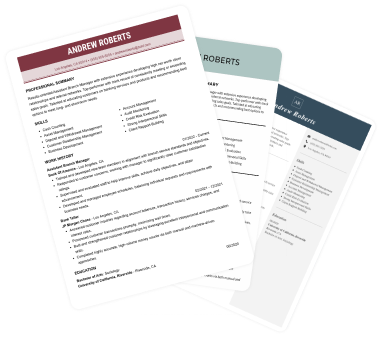
Under Pressure: European Workers Struggle (2025 Report)
In May 2025, we asked 1,000 European workers to share their concerns about the current economy—here’s a summary of the findings.
November 7, 2025
Last updated on 7 November, 2025

Questioning one’s life choices is common. But when this uncertainty becomes overwhelming, it may signal a crisis. So many Millennials and Gen Zs experience anxiety over their professional careers and lifestyles that psychologists have recognised this phenomenon as the quarter-life crisis. In this article, I explain what causes the quarter-life crisis and how common it is, as well as share tips to overcome the struggles related to this phenomenon.
Key findings:
A quarter-life crisis refers to existential struggles that young adults may experience between mid-twenties and early thirties. It involves uncertainty and anxiety regarding major life choices such as career and profession, relationships, financial status, and societal expectations. The term quarter-life crisis was created by journalists A. Robbins and A. Wilner, who published a book on this subject in 2001.
What causes this phenomenon? Reasons are varied, but significant ones include job dissatisfaction, societal pressure, familial expectations, financial struggles, and student loan debt.
Why does it affect people in their mid-20s? Fresh graduates often feel pressured to take the first job available, even if it doesn’t closely align with their long-term career goals. Once they realise that the job isn’t fulfilling, they may start doubting themselves and feel the need for a dramatic change, such as quitting the job, moving to a new place, or taking a long break.
There is no specific research concerning the number of individuals affected by the quarter-life crisis. However, it’s possible to extrapolate from publicly available data:
With these numbers, we can calculate that there are over 2 million employees aged 25–29. However, the actual number might be even higher; if we consider the labour-force participation rate of 84.3% for the age group 25–34, there could be 3.74 million people aged 25–29 in the UK labour force.
Of course, not all employees within that age group experience the quarter-life crisis. However, looking at the available data on depression and work-related stress shows that:
Combined with the total number of Britons aged 25–29, we can estimate that over a million individuals in that age group experience depression. Furthermore, Deloitte’s 2025 report found that 48% of Gen Z respondents and 46% of Millennial respondents experience financial insecurity, and over 50% of both generations live from pay cheque to pay cheque. At work, depression and burnout can easily translate to high levels of stress, missed days, lower productivity, and a desire for a change.
Research into employees’ behaviour shows that the wish for a change isn’t isolated. A 2025 report by Michael Page found that 26% of workers are considering a career change, with the average age for switching professions being 31. Workers usually sought careers that offered better earnings or that they felt more passionate about, but work-life balance is also a significant factor. Randstad’s 2024 research shows that 60% of workers consider this a priority when choosing a new role.
You’re not the only twenty-something feeling lost and anxious about your career choices. The good news is that it’s possible to use these feelings to inspire yourself and seek a change that will benefit you. You’re not condemned to work an unfulfilling job for the rest of your days.
However, I advise against quitting your job outright, especially if you’re in a difficult financial situation. It’s better to consider your options first. Try the tips below to make your plan:
If you’re eligible, take a holiday or sick days to give yourself a break from your work duties. I recommend having at least a week off at a time. Take a trip to a different place to distance yourself from your job mentally. It doesn’t have to be far or luxurious; even a train ride to a nearby town can help you unwind and get a fresh perspective. When you don’t focus on everyday responsibilities, you’ll have the mental capacity to come up with new ideas and consider various solutions to your problems.
We’re rarely 100% objective. When you’re feeling down, it’s common to focus extensively on negative aspects of your life. Consider the advantages and disadvantages of your current profession and write them down on a piece of paper. Having them laid out visually can help you see if the benefits outweigh the downsides or vice versa.
What skills have you developed through education and at work? What type of software have you mastered? Are you learning anything in your free time? Use a spreadsheet to list all your hard skills, soft skills, and computer skills. Don’t skip any qualities, as you never know which might be valued at your next workplace.
Start from the most reasonable options—ones that are connected to your current profession or your university degree—and continue with less viable ideas. Rate each job in terms of how fulfilling it would be, how easily you could get it, and how much it pays. Additionally, consider whether these jobs could be affected by AI in the next 5 years. This should help you choose a job to focus your efforts on.
If a lack of higher education or professional certification is the obstacle on your way to a dream career, check what it would take to get it. There’s a myriad of free online certifications; if the qualification you need is costly, plan your budget accordingly to save for it. Additionally, the National Careers Service provides information on free level 2 and level 3 qualifications that can help you join a new profession.
Following these steps on your own can be difficult, especially if your life commitments prevent you from finding time for yourself. You can get free advice from the National Careers Service by calling their toll-free number, 0800 100 900. These professionals can help you evaluate your strengths, explore various career paths, and inform you about available training options. If you’re also struggling with excessive stress, anxiety, or depression, you can consult the NHS website for free talking therapy solutions.
Given my estimates based on available data, it’s possible that the quarter-life crisis can affect around a million people in the UK. But uncertainty around one’s career isn’t limited to workers under 30, as burnout may affect employees of all ages. The current economic climate may further increase the prevalence of this phenomenon, as forecasts about the rest of 2025 are rather pessimistic.
When so many labour force participants suffer from high stress, anxiety, and even depression due to their work situation, it can lead to severe negative outcomes: decreased productivity, work absences, and being unable to care for loved ones. Maybe it’s time for business owners, economists, and public health experts to stop treating work-related mental health struggles on an individual level and start treating them as systemic ones?
The information included in this article is based on publicly available research and statistics, including:
Our editorial team has reviewed this article for compliance with LiveCareer’s editorial guidelines. It’s to ensure that our expert advice and recommendations are consistent across all our career guides and align with current CV and cover letter writing standards and trends. We’re trusted by over 10 million job seekers, supporting them on their way to finding their dream job. Each article is preceded by research and scrutiny to ensure our content responds to current market trends and demand.
Category: Career Advice
Crafting a job-winning CV is all about showcasing your unique skills and experiences. Start with a strong personal statement that highlights your career goals and achievements.
Try Our CV Builder Now